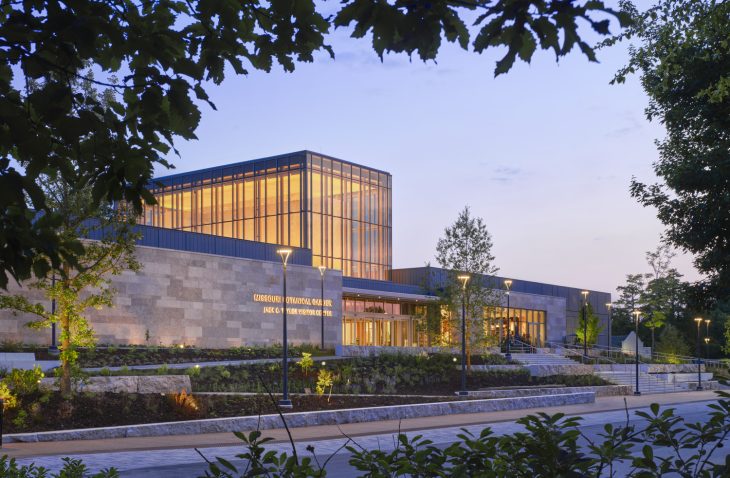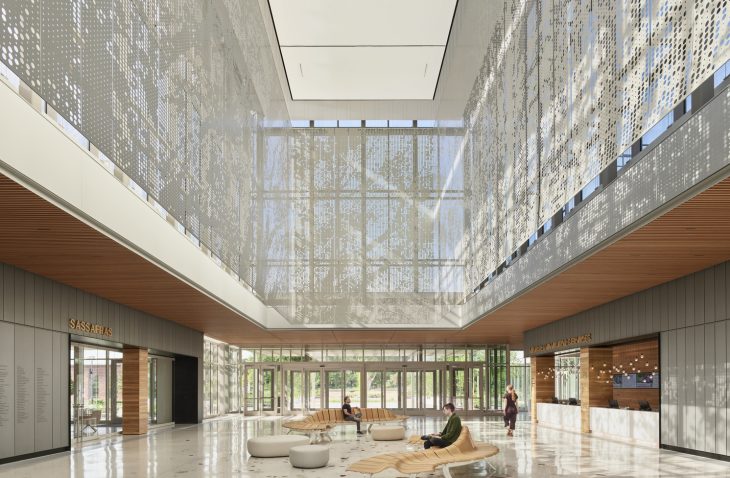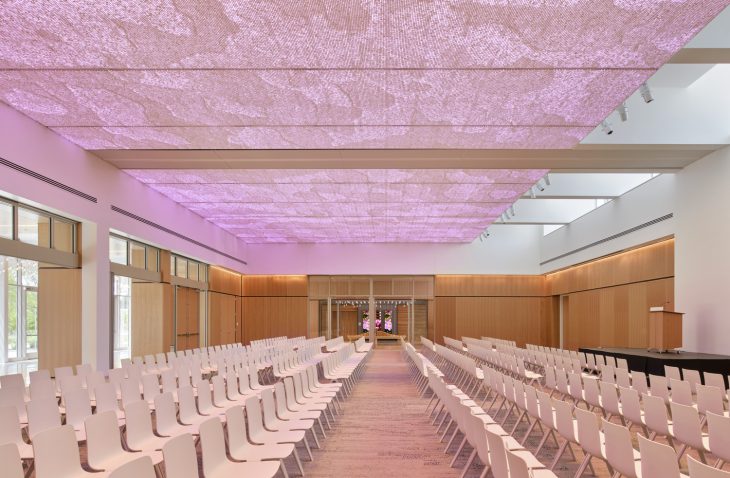New Botanical Gardens Visitor Center
LEED Gold
Project: A new 91,700-square-foot facility with an event center, gift shop, meeting spaces, restaurant with garden views, auditorium, and conservatory, as well as the 2,100-square-foot renovation of the historic Linnean House—the oldest continuously operated public greenhouse west of the Mississippi.
Goal: Expand the facility’s ability to handle a higher visitor flow and host community events, indoor weddings, and world-class seminars on botany.
Design approach: The design-assist approach involved early collaboration with MEP subcontractors during the design development stage. IMEG engineers and subcontractors met biweekly to facilitate real-time coordination, addressing common field-related issues.
Challenge: Because the garden receives nearly 1 million visitors each year and its operations depend on that revenue, closing for construction was not an option. Solution: Multiple phases of design and construction. The first phase of construction consisted of building a temporary visitor center that would ultimately become the event center and then demolishing the existing visitor center. Because the temporary visitor center would be renovated into the event center in later phases, the design team had to design phase 1 with the end goal of phase 3 in mind, not simply as a temporary solution. This required forward thinking for the utility and architectural infrastructure needed for phase 3 at the beginning of the project.
Challenge: The buildings needed to seamlessly blend the mechanical, electrical, and technology systems with the architect’s aesthetic features and furnishings to achieve the natural and beautiful finish the owner desired. Solution: The design included specialty wood ceilings and finishes that required a high level of coordination for all ceiling devices and A/V cabling and to provide access for maintenance.
Challenge: Renovating a historic greenhouse while maintaining the historic structure and aesthetic. Solution: Significant coordination among team members ensured the new infrastructure did not overpower the historic architecture.
Outcome: The Jack C. Taylor Visitor Center at the Missouri Botanical Garden is not only a showcase of innovative technology and engineering design, but it is also a staple in the community for events and education. With new accessibility features, increased visitor capacity, and thoughtful design elements for comfort and a natural aesthetic, the visitor center creates a dynamic experience from the moment guests arrive.










